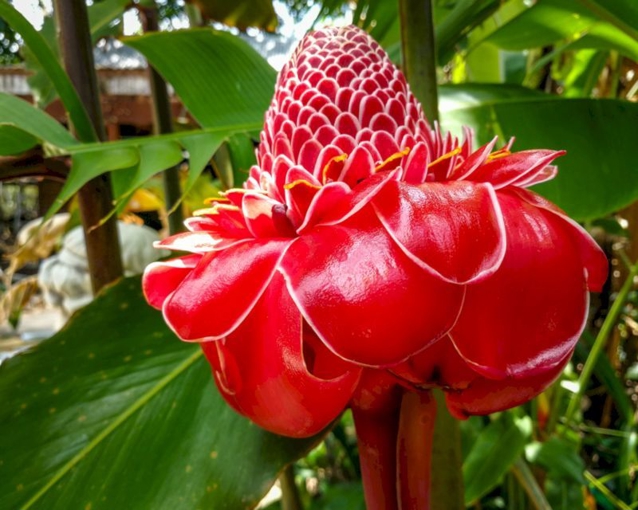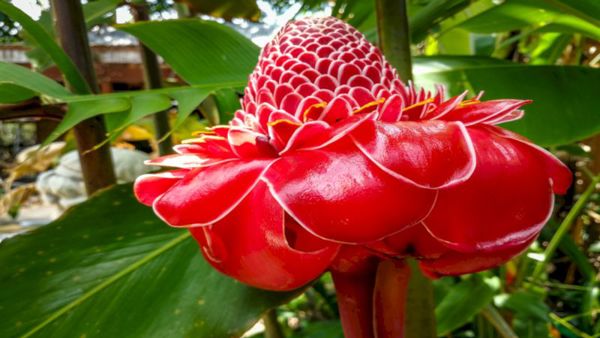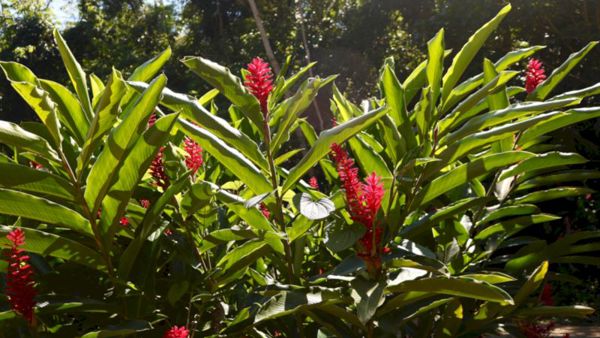Yates Account
Join now
Create a Yates account today!
Sign up to join the Yates Garden Club for monthly e-mails packed with seasonal inspiration, tips for success & exclusive promotions.
Plus if you’re a Garden Club member you can take part in the Yates Growing Community - a blog to share successes, get advice & win prizes in fun challenges along the way!

Forgot password
Enter the email address associated with your account, and we'll email you a new password.

Most ginger plants are grown to be used in floristry due to their exquisite flowers and beautiful foliage. However, there are a few exceptions, such as Edible Ginger (Zingiber officinale) and Cardamom (Elettaria cardamomum) which are grown for human consumption. Ornamental Gingers are very popular garden plants as they provide a fantastic floral display in a multitude of shapes and colours. Many are evergreen, however some species will die down and regrow year after year.
How to grow Ornamental Ginger in a garden
- Depending on the variety chosen, Ornamental Gingers can live in full sun to full shade, check the label for the most suitable aspect.
- Choose a position protected from winds with moist but well drained soil.
- Enrich the soil with Yates Thrive Natural Blood & Bone with Seaweed. If the soil is clay based, add gypsum and fork in well.
- Dig the planting hole twice as wide and to the same depth as the root-ball. Remove the plant from the container and gently tease the roots.
- Position in hole and backfill, gently firming down. Form a raised doughnut shaped ring around the plant, creating a well so that water will go where it’s needed most. Water in well.
- Mulch with an organic mulch like woodchip or pea straw, keeping it away from the base of the plant.
- Water deeply, then once or twice a week, depending on weather conditions.
- During the growing and flowering season feed with Yates Thrive Rose & Flower Granular Plant Food. TIP: for an added boost apply Yates Thrive Natural Fish & Seaweed+ Plant Food Concentrate.


How to grow Ornamental Ginger in a pot
- Choose a pot at least 300mm wide.
- Depending on the variety chosen, Ornamental Gingers can live in full sun to full shade, check the label for the most suitable aspect.
- Choose a position with protection from wind and hot afternoon sun.
- Fill the pot with quality potting mix, such as Yates Premium Potting Mix.
- Remove the plant from the container, position in hole and backfill, gently firming down.
- Water deeply, then once or twice a week, depending on weather conditions.
- Feed with Yates Thrive Roses & Flowers Liquid Plant Food. TIP: for an added boost apply Yates Thrive Natural Fish & Seaweed+ Plant Food Concentrate.
Growing tips
- Prune down old growth at end of growing period.
- Remove spent flowers during growing period.
- Give a big clean up and prune down at the end of summer if required. Fleshy off cuts can be composted and any rhizome divisions replanted.
- Gingers work well in tropical style gardens. They work well as an undergrowth planting, where the taller trees/garden gives protection to the lower ginger. Mix different gingers together, planting taller varieties to the back and shorter ones to the front of the garden. They also work well with other accent plants like cordylines, alternanthera and coleus.
Hellebores are the moody, gothic jewels of the winter garden. Learn how you can grow them in garden or in pots.
Gardenia
Gardenias have soft scented blooms in white or yellow. Depending on the variety, can be grown as a shrub, standard, hedge or ground cover.
Freesia
Freesias are a spring flowering bulb that produce scented blooms in a range of vibrant colours including pinks, white, yellow, mauve and red.
Flax
Flax (Phormium spp.) are highly versatile plants which can grow well in swampy or dry conditions. Great for large pots or en-masse in garden beds.
Recommended products
Yates Thrive Rose & Flower Granular Plant Food
Specially formulated to grow all types of flowers. With high potassium for large & abundant flowers, added calcium & iron for stronger flowers.
Yates Thrive Roses & Flowers Liquid Plant Food
Provides your flowers & roses with the balanced nutrients they require for healthy growth and flower production.
Yates Thrive Natural Blood & Bone with Seaweed
A certified organic garden input boosted with NZ Seaweed to gently nourish plants, enrich the soil and encourage a strong healthy root system.
Yates Premium Potting Mix
A premium potting mix, ideal for all potted plants and shrubs, including ornamentals, fruit trees, vegies and herbs.
















Share
Share this article on social media